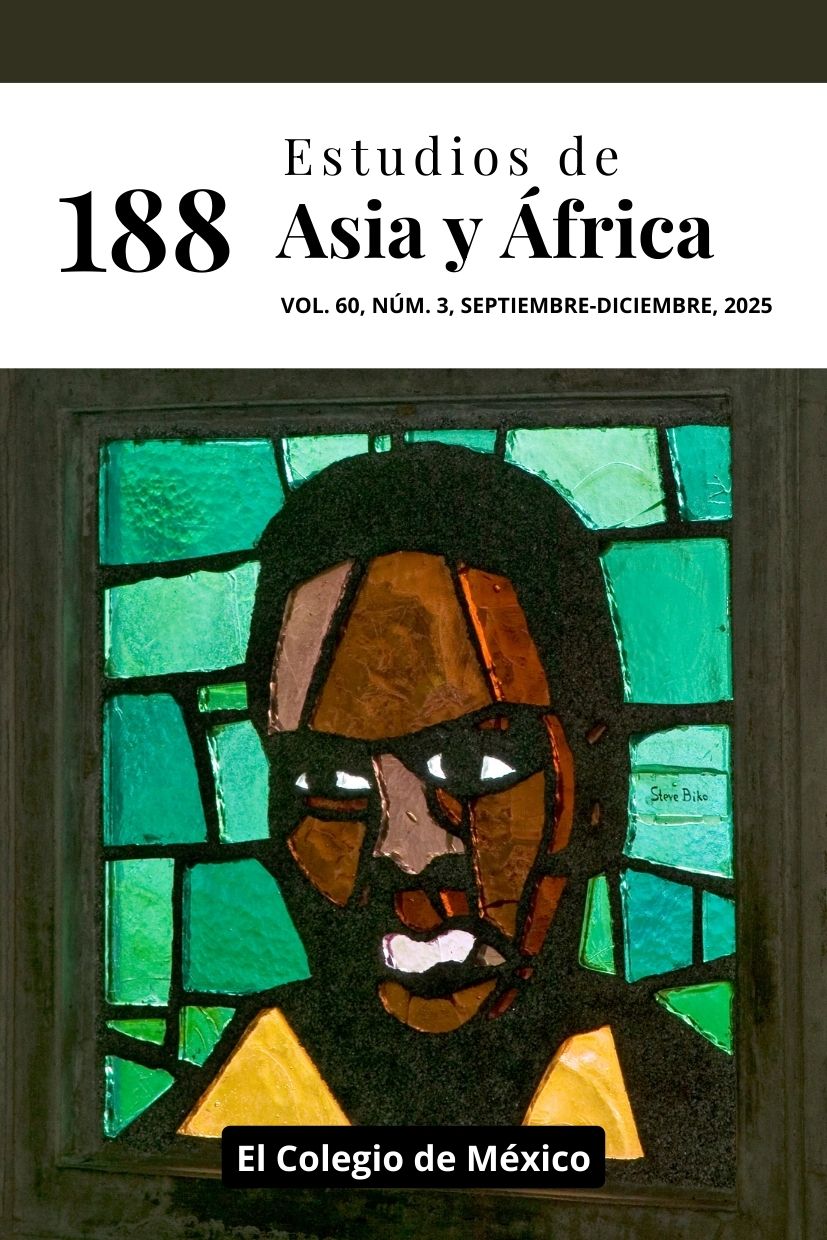Abstract
A utopian promise of bi-national and inter-religious coexistence nestles in the Judeo-Arabic language, a millennia-old translator between two cultures that national-colonial political theology reduces to enmity. In translation (in a philosophical sense), seeking to de-essentialize Hebrew and Arabic, I see utopia as enabling the decolonization of political theology for the sake of a cosmopolitics of language. For a millennium the Arabic and Hebrew languages, whose enmity today is considered inexorable, were able to think, believe, and create —with others— different expressions of the fear of the same God. From some fragments of Judeo-Arabic texts of the 10th and 11th centuries, based on a heteronomous ethical and political perspective, I analyze the utopian potentialities of the act of translation.
References
Asad, Talal. 2018. Secular Translations. Nation-State, Modern Self, and Calculative Reason. Nueva York: Columbia University Press. https://doi.org/10.7312/asad18968
Bajtín, Mijaíl. 1989. Teoría y estética de la novela. Traducido por Helena Kriúkova y Vicente Cazcarra. Madrid: Taurus.
Bajtín, Mijalí. 1999. Estética de la creación verbal. Traducido por Tatiana Bubnova. Ciudad de México: Siglo XXI.
Behar, Almog. 2008. Ana min al yahud [en hebreo]. Tel Aviv: Babel. [En español: https://almogbehar.wordpress.com/espanol/].
Benjamin, Walter. 2001. “La tarea del traductor”. En Ensayos escogidos, traducido por Héctor Murena. México: Coyoacán.
Benmakhlouf, Ali. 2020. Pourquoi lire les philosophes arabes. L’héritage oublié, París: Albin Michel.
Canal France 24. 2023. Programa televisivo especial “El gueto de Varsovia 80 años después” [en árabe]. 9 de junio de 2023. غيتو وارسو بعد 80 عاما.. متاهات الذاكرة - تذكرة عودة (france24.com) https://www.youtube.com/watch?v=s-E0NCuUGxE
Cassin, Barbara. 2023. “La traducción como paradigma para las humanidades”. Traducido del inglés por Ana Olivares Muñoz-Ledo. Interpretatio 7 (2): 167-197. https://doi.org/10.19130/irh.2022.7.2.00X27S0039
Chemouilli, Henri. 1959. “Juifs Nord-Africains en Israël”. Le Monde, 6 de agosto de 1959. https://www.lemonde.fr/archives/article/1959/08/06/juifs-nord-africainsen-israel_2146785_1819218.html
Derrida, Jacques. 1996. Le monolinguisme de l’autre. París: Galilée.
Derrida, Jacques. 2002. Torres de Babel. Traducido al portugués por Junia Barreto. Belo Horizonte: Editora ufmg.
Diagne, Souleymane Bachir. 2022. De langue à langue. L’hospitalité de la traduction. París: Albin Michel.
Gallego, María Ángeles. 2006. El judeo-árabe medieval. Edición, traducción y estudio lingüístico del Kitāb al-taswi’a de Yonah ibn Ğanāḥ. Berna: Peter Lang.
Goiten, Shelomo Dov. 1971. A Mediterranean Society. The Jewish Communities of the Arab World as Protrayed in the Documents of the Cairo Geniza. Vol. 2, The Community. Berkeley: University of California Press. https://doi.org/10.1525/9780520354135
Griffith, Sidney H. 2013. The Bible in Arab. The Scriptures of the “People of the Book” in the Language of Islam. Princeton: Princeton University Press.
Hary, Benjamin. 2012. “Judeo-Arabic as a Mixed Language”. En Middle Arabic and Mixed Arabic. Diachrony and Synchrony, editado por Liesbeth Zack y Arie Schippers, 125-144. Leiden: Brill. https://doi.org/10.1163/9789004228047_008
Ibn Paqūda, Baḥya. 1994. Los deberes de los corazones. Traducido por Joaquín Lomba Fuentes. Madrid: Fundación Universitaria Española. Traducción hebrea (1008) de R. Yehuda Ibn Tibbon. Tel Aviv: Yediyot Akhronot.
Kafka, Franz. (1912) 1987. “Discurso sobre la lengua ídish”. En Obras completas, t. 1, 98-101. Traducido por Fath al-Santott. Barcelona: Edicomunicación.
Khan Goeffrey. 2016. “Judeo-Arabic”. En Handbook of Jewish Languages, editado por Lily Kahn y Aaron D. Rubin, 22-63. Leiden: Brill. https://doi.org/10.1163/9789004297357_004
Levinas, Emmanuel. (1974) 1987. De otro modo que ser o más allá de la esencia. Salamanca: Sígueme.
Lomba Fuentes, Joaquín. 1989. “Significación de la filosofía islámica en Zaragoza”. Aragón en la Edad Media. 8: 441-448.
Lomba Fuentes, Joaquín. 1997. La raíz semítica de lo europeo. Madrid: Akal.
Lomba Fuentes, Joaquín. 2002. El Ebro: puente de Europa. Pensamiento musulmán y judío. Zaragoza: Mira.
Malter, Henry. 1921. Saadia Gaon. His Life and Works. Filadelfia: The Jewish Publi- cation Society of America.
Meschonnic, Henri. 2005. “Pour en finir avec le mot ‘Shoah’”. Le Monde, 19 de febrero de 2005. https://www.lemonde.fr/idees/article/2005/02/19/pour-en-finir-avec-lemot-shoah-par-henri-meschonnic_398817_3232.html
Rabinovich, Silvana. 2018. Interpretaciones de la heteronomía. Ciudad de México: Universidad Nacional Autónoma de México.
Rabinovich, Silvana. 2021a. La Biblia y el dron. Sobre usos y abusos de figuras bíblicas en el discurso político de Israel. Ciudad de México: Heredad.
Rabinovich, Silvana. 2021b. Trazos para una teología política descolonial. Ciudad de México: Universidad Nacional Autónoma de México.
Rabinovich, Silvana. 2022. “Al encuentro de otros mundos (apuntes para una ética pluriversal)”. Résistances 3 (5): e21079. https://doi.org/10.46652/resistances.v3i5.79
RaSaG (Rabi Sa’adia Gaon). 1990. “Tafsir Tehilim” [en hebreo]. Shalosh Meguilot veTafsir leTehilim. Jerusalén: Majón Shalom leShivtei Yeshurun.
Raz-Krakotzkin, Amnon. 2007. Exil et souveraineté. París: La Fabrique.
Raz-Krakotzkin, Amnon. 2022. Mishna Consciousness, Biblical Consciousness. Safed and Zionist Culture [en hebreo]. Tel Aviv: Van Leer Institute Press/Hakibutz Hameujad.
Rodinson, Maxime. 2002. Mahoma. El nacimiento del mundo islámico. Traducido por María Elena Vela de Ríos. Barcelona: Península.
Rosenzweig, Franz. 1998. L’écriture, le verbe et autres essais. Traducción, notas y prefacio de Jean-Luc Evard. París: Presses Universitaires de France.
Said, Edward. 2004. Orientalismo. Barcelona: Debolsillo.
Shenhav Shahrabani, Yehuda. 2020. Laborers and Actors in Translation. From the Individual Turn to a Bi-National Translation [en hebreo]. Jerusalén: Van Leer Institute Press.
Shohat, Ella. 1997. “Sephardim in Israel. Zionism from the Standpoint of its Jewish Victims”. Dangerous Liaisons. Gender, Nation & Postcolonial Perspectives, editado por Anne McClintock, Aamir Mufti y Ella Shohat, 39-67. Minneapolis: University of Minnesota Press.
Shohat, Ella. 2015. “The Question or Judeo-Arabic”. The Arab Studies Journal 23 (1): 14-76. https://www.jstor.org/stable/44744899
Stengers, Isabelle. 2014. “La propuesta cosmopolítica”. Pléyade, núm. 14, 17-41. https://revistapleyade.cl/index.php/OJS/article/view/159
Vajda, Georges. 1950. La teología ascética de Bahya Ibn Paqūda. Traducido por José María Solá Solé. Madrid: Consejo Superior de Investigaciones Científicas.
This work is licensed under a Creative Commons Attribution-NonCommercial-NoDerivatives 4.0 International License
Copyright 2022 Estudios de Asia y África



